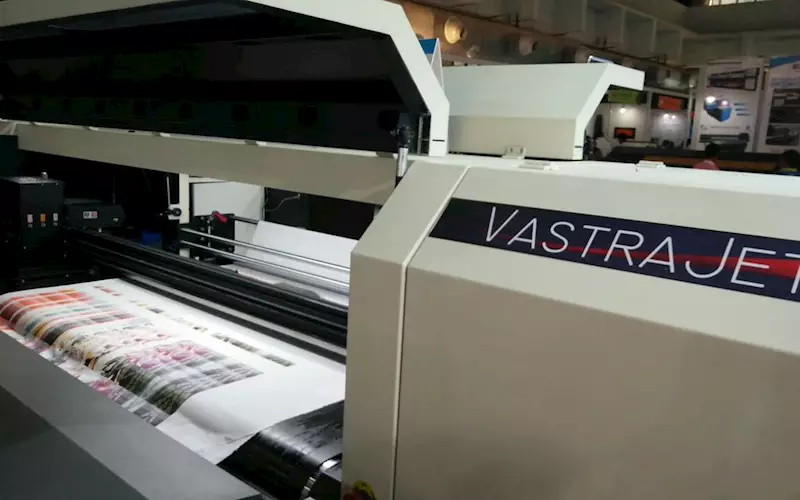Colorjet piques customer interest in digital textile printing
In the inaugural edition of Gartex in New Delhi, Colorjet saw more than 500 curious visitors enquiring about digital textile printing machines during the three days of the show.
01 Sep 2016 | By Rahul Kumar
The Indian manufacturer showcased its VastraJet 1.8-metre wide digital printing machine which prints directly on cotton, polyester and blends.
Smarth Bansal, brand manager, Colorjet India, said, “Vastra means clothes, which clearly implies that Colorjetis an Indian multi-national company. Today, we have 55 + direct-to-fabric digital printing machine installations in India and over 10 in other geographies like Sri Lanka, Dubai, parts in UAE and Africa.”
The USP of Colorjet machines is the low cost of ownership which, according to the company is because it markets its digital textile printers directly to the end-user. This also results in substantial reduction in the payback period.
Speaking about the interest of visitors at the show, Bansal said, “We witnessed footfalls from all geographies spanning from Panipat in the North to Bengaluru and Hyderabad in the South, and from Kolkata in the East to Mumbai and suburbs in the West. Among visitors, there was tremendous interest in printing different types of fabric, which can be used in home furnishing industry such as velvet, jacquards, towel fabrics, cotton satin, bamboo silk, polyester, etc.”
According to Bansal, there was tremendous interest in digital pigment ink printing, which is a waterless technology and is environment friendly. The advantage for the user is shorter process length as it doesn’t require post treatment apart from curing the printed fabric.
“The print firms were looking for digital printing machinery to print unique and exclusive deigns for home furnishing segments such as upholstery, towels, curtains, bed covers, duvet, bed sheets, table covers, drapes etc,” concluded Bansal.
The state of digital print for Indian textile industry
Only 1% of India's printed textiles are produced digitally. The majority of digital printing on textiles is done today mainly on polyester fabrics using dye sublimation.
Currently, 384 million metres of fabric is printed digitally
2.5% or almost 75 million metres of fabric is printed with DTG
In revenue size, this is equivalent to Rs 25,000 crores (including inks)
Ink consumption on an average is around 8-12gm/m with an annual ink consumption of 700-800 metric tonnes














 See All
See All